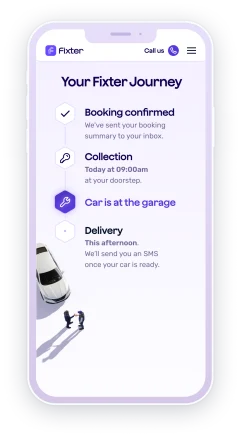Common Dacia Sandero Issues and How to Handle Them
The Dacia Sandero, a popular choice for budget-conscious drivers, is known for its affordability and practicality. While it offers great value for money, like any car, it comes with its own set of challenges that owners might face. From electrical gremlins to issues with the gearbox, being aware of these common problems can help you keep your Sandero running smoothly. In this article, we will explore some of the common problems with dacia sandero faced by dacia owners and provide straightforward advice on how to address them. Whether you're a seasoned driver or new to car maintenance, this guide will equip you with the knowledge to tackle any hiccups with confidence.

Common Engine Problems
The engine is the heart of your Dacia Sandero, and any issues here can lead to significant problems. Understanding common engine troubles and how to manage them can save you time and money, ensuring the reliability of your vehicle .
Engine Misfiring
Engine misfiring can be a concern for Sandero owners. Misfiring occurs when one or more cylinders fail to combust properly, often resulting in symptoms like rough idling . This leads to a rough ride and decreased fuel efficiency.
Several factors can cause misfiring. Worn spark plugs or ignition coils are frequent culprits. These components can develop faults as they wear out over time, causing irregular engine performance.
Another reason might be fuel delivery issues. Clogged fuel injectors or a failing fuel pump can interrupt the fuel supply to the engine. This prevents the cylinders from firing as they should.
To address misfiring:
Check and replace worn spark plugs.
Inspect ignition coils for damage.
Ensure fuel injectors are clean.
Addressing these aspects can help maintain engine performance and extend the lifespan of your vehicle.
Overheating Issues
Overheating is another engine problem that can plague the Sandero. When the engine temperature rises excessively, it can cause severe damage.
Coolant leaks are a primary cause of overheating. Inspect your vehicle regularly for leaks from the radiator or hoses, especially if you have automatic air conditioning . If you find any, have them repaired promptly.
Another potential issue is a faulty thermostat. If the thermostat sticks, it can prevent coolant from circulating properly, leading to increased engine temperatures.
To prevent overheating:
Regularly check coolant levels.
Inspect and replace damaged hoses.
Ensure the radiator is free of obstructions.
Taking these steps can prevent costly repairs and ensure your Sandero remains in top condition.
Electrical System Troubles
Electrical problems can be frustrating and difficult to diagnose. However, understanding the common issues and their solutions can help you avoid inconvenience, which is crucial for dacia buyers .
Battery Draining Quickly
A quickly draining battery is a common issue. It can leave you stranded if not addressed promptly.
A parasitic drain is a frequent cause. This occurs when an electrical component remains active even when the car is off.
Faulty alternators can also lead to a drained battery. If the alternator isn't charging the battery correctly, it will lose power quickly.
To tackle battery drain and address potential problems :
Inspect for parasitic drains by checking for lights or accessories left on.
Test the alternator's output.
Consider replacing an old or faulty battery.
These steps can help ensure your car starts reliably each day.
Faulty Wiring Concerns
Faulty wiring can cause various electrical problems, from flickering lights to non-functioning accessories.
Poor connections or damaged wiring are common culprits. Over time, wires can fray or corrode, leading to electrical failures.
To address wiring issues:
Inspect wires for visible damage.
Ensure connections are secure.
Replace any frayed or corroded wires.
Maintaining the wiring in good condition ensures your vehicle’s electrical systems function smoothly.
Transmission Challenges
Transmission issues can affect the performance and drivability of your Sandero. Understanding these problems can help you maintain smooth operation and ensure your affordable Sandero runs well .
Gear Shifting Difficulties
Gear shifting difficulties can be frustrating and impact your driving experience. This might manifest as hard shifts or slipping gears.
Low transmission fluid levels are a common cause. Without proper lubrication, the gearbox can struggle to operate smoothly.
Another issue might be a worn clutch. A clutch that is worn out can lead to hard shifts and grinding noises.
To improve gear shifting:
Check and top up transmission fluid.
Inspect the clutch for wear and replace if necessary.
Consult a mechanic if the problem persists.
Addressing these issues can restore the smooth shifting of your Sandero.
Clutch Problems
Clutch problems can affect the way your Sandero drives. If the clutch is not working properly, you might notice slipping or difficulty engaging gears.
A slipping clutch often indicates wear and tear. Over time, the clutch disc and pressure plate can degrade, leading to slipping and loss of power.
To manage clutch issues, consider the usual signs of wear and tear :
Regularly check for signs of wear.
Replace worn clutch components promptly.
Ensure the clutch cable is adjusted correctly.
By keeping the clutch in good repair, you can maintain efficient vehicle operation.
Suspension Complications
Suspension issues can lead to an uncomfortable ride and affect vehicle handling. Understanding these problems can help you maintain a smooth driving experience.
Uneven Tyre Wear
Uneven tyre wear is a common sign of suspension problems. It occurs when tyres wear out faster on one side than the other, affecting grip and safety.
Misaligned wheels are a frequent cause. When wheels are not aligned correctly, they don't roll straight, leading to uneven wear.
To prevent uneven tyre wear:
Regularly check and adjust wheel alignment.
Ensure tyres are inflated to the correct pressure.
Rotate tyres periodically for even wear.
Keeping tyres in good condition improves safety and prolongs their lifespan.
Noisy Suspension
Noise from the suspension can indicate problems that need attention. Common sounds include clunking or squeaking when driving over bumps, which can also interfere with your sound system .
Worn shock absorbers are often to blame. When shocks wear out, they fail to dampen the movement of the suspension, leading to noise.
To address noisy suspension:
Inspect shock absorbers for leaks or damage.
Check bushings and joints for wear.
Replace any worn suspension components.
Resolving these issues can restore a smooth and quiet ride.
Brake System Woes
Brake problems are critical to address as they directly impact safety. Being aware of common brake issues can help you ensure your vehicle stops effectively, reflecting the quality of the company behind your Sandero .
Brake Pedal Vibration
Brake pedal vibration is a common brake issue, often indicating warped brake discs. This can occur due to excessive heat or wear.
When the discs are warped, the brake pads cannot apply even pressure, causing vibration.
To address brake pedal vibration:
Inspect brake discs for warping.
Replace damaged discs promptly.
Ensure brake pads are in good condition.
Maintaining a smooth braking system ensures safe and effective stopping power.
Squeaking Brakes
Squeaking brakes can be annoying and might indicate a problem. This noise usually results from worn brake pads or lack of lubrication.
Worn pads can expose the metal backing, causing a squeak when they contact the rotor.
To solve squeaking brakes:
Check brake pads for wear and replace if necessary.
Apply lubricant to brake components as needed.
Inspect for any debris caught between the pads and discs.
Ensuring brake components are in good condition helps maintain a quiet and effective braking system.








